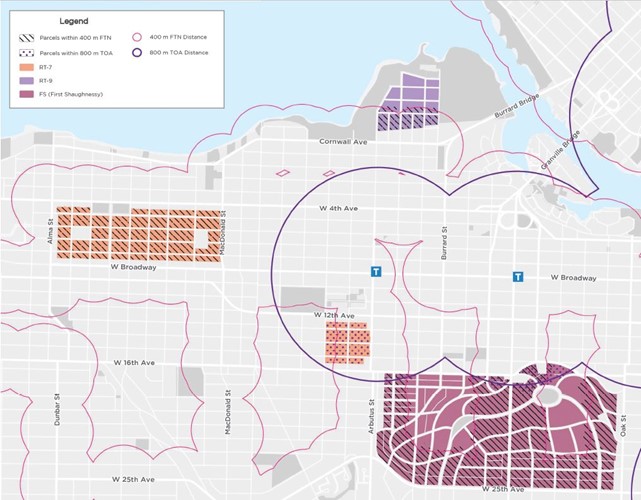Many municipalities across British Columbia are raising concerns about how the province has mandated a one-size-fits-all approach under bills 44, 46 and 47, requiring rushed rezoning by June 30, and banning public hearings.
This dictate is an unjustified deflection of the provincial lack of supports for affordable housing and infrastructure that is provincial responsibility, with jurisdictional overreach into municipal authority to try to take credit for zoning approvals while downloading the costs.
Lower Mainland municipalities such as Burnaby, Richmond, Surrey, New Westminster, Township of Langley and Coquitlam are a few of the many that have voiced opposition to provincial interference in planning. Many have been approving development at a record pace and are waiting for provincial funding for affordable housing to start construction.
The City of Vancouver council has in contrast unanimously endorsed the bills and is pushing through rezonings before June 30, without time for any public consultation, proper planning or infrastructure review.
This is regardless of city staff confirming at a council meeting May 14 that there is more than enough development currently in the pipeline to meet provincial five-year housing targets. The further applications that will be received over this next five years will be on top of this and beyond what is required by the province to meet the five-year housing targets.
To get more new affordable housing built requires more provincial funding. More older affordable units are likely being lost to demolition than affordable units built.
Staff also noted that due to economic factors beyond the city’s control, many already approved projects are being put on hold. So there is no imminent pressure to rezone more without proper planning processes.
No public consult for Kits and Shaughnessy
However, the city is proceeding with rezoning large neighbourhoods in Kitsilano (RT-7 and RT-9 zones) and all of the First Shaughnessy Heritage District, without any public consultation process. The only reason there is a public hearing today, June 13, is that the rezoning goes beyond what is required by the bills. Otherwise, no public hearings are allowed.

Bill 44 requires up to six units per lot for lots as small as 3,014 square feet (i.e., 33 by 92 feet) without a lane, as long as it is near a bus route with frequent service. City of Vancouver staff admit that this is not actually feasible given the small amount of usable space in the units, infrastructure requirements of a 12-by-12-foot allowance for an electrical transformer and underground rainwater retention tanks due to undersized civic utilities. Yet this minimum lot size is applied to all Kitsilano RT-7 and RT-9 zones.
The existing Kitsilano RT-7 and RT-9 zones were originally created specifically for these areas that mostly contain character houses converted to multiple suites and infill, with many units as rentals. The new zoning will eliminate the incentives for retention, removes design guidelines and will displace many renters in older affordable suites.
With proper planning there could be increased numbers of units, with more usable spaces for families, while also retaining the historic character of the area.
Even more so for First Shaughnessy Heritage District. With the large heritage houses on large lots, there are many more opportunities for multiple unit conversions and infill that could provide larger family-sized units.
Instead, the city is responding to provincial mandates by removing all current heritage protections for First Shaughnessy district under the heritage conservation area bylaw. Also by removing zoning bylaw protections, incentives for retention and design guidelines. The First Shaughnessy Advisory Design Panel is being dissolved.
This important heritage area will be lost, rather than carefully planning for the great growth potential within the heritage context.
In addition, Bill 47 for transit-oriented areas, or TOAs, must also be designated and updated by June 30. This is requiring a minimum standardized scale of tower development of up to 20 storeys, or more, around transit stations and bus exchanges regardless of local context. While many municipalities are already exceeding this in some locations, it may not be appropriate for the same everywhere.
This shows that rushed provincial mandates have no business interfering in municipal and regional planning. It is not going to create more affordability.
Revive cancelled co-op housing
What the province can do is reintroduce its co-op housing program that was cancelled in 2001.
This was a very successful program that had true affordability based on equal thirds of deep rental subsidies, moderate rental subsidies and lower market rentals. They were large ground-oriented units for families, of up to 50 units per project, that could fit into any neighbourhood.
This provincial co-op program was introduced to replace the former federal Canada Mortgage and Housing Corp. co-op program that was cancelled in the early 1990s.
Recently, CMHC announced a new federal non-profit co-op housing program. However, it has a minimum size of 75 units and much less affordability at up to 110 per cent of the median market rent. It is not as good as CMHC’s previous program, but at least it is in the right direction rather than just funding private developers.
Both the provincial and the federal governments should do what is in their jurisdiction by creating and funding co-op housing rather than deflecting their own failures in addressing affordable housing onto municipalities.
The province should be focusing on its responsibilities of funding affordable housing and infrastructure for growth, such as schools and transit, not interfering in municipal and regional planning. ![]()
Read more: BC Politics, Housing, Municipal Politics, Urban Planning

















Tyee Commenting Guidelines
Comments that violate guidelines risk being deleted, and violations may result in a temporary or permanent user ban. Maintain the spirit of good conversation to stay in the discussion and be patient with moderators. Comments are reviewed regularly but not in real time.
Do:
Do not: